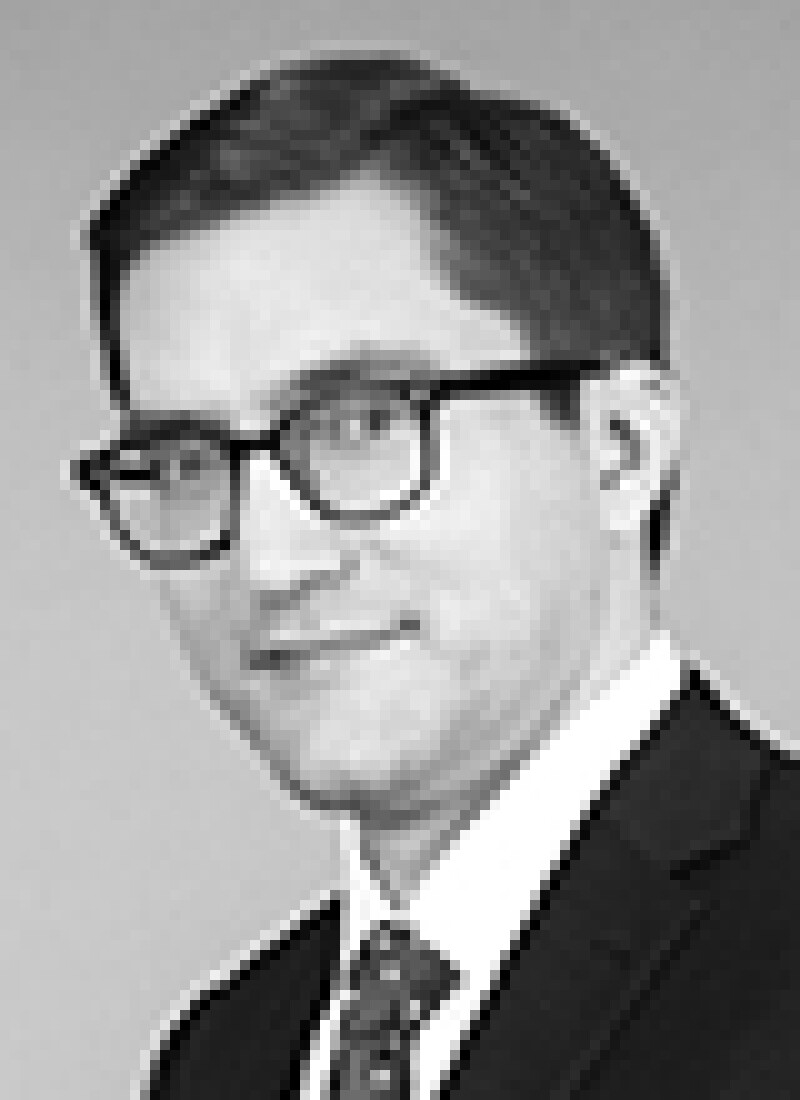With specialised and generally patent-friendly courts, a relatively simple process for applying for patent protection and overall reasonable government fees, Canada is an attractive jurisdiction for innovative companies to secure and enforce their patent rights. This is even more so following amendments to the Canadian Patent Rules, which came into force on October 30 2019. These amendments streamlined some procedural steps and left intact some of the most favourable aspects of the Canadian system. This article draws attention to some key Canadian practice points to assist global IP owners in taking advantage of the flexibility and cost-effectiveness of the Canadian system, while being cautious to avoid certain pitfalls.
Flexibility of Canadian prosecution
The Canadian patent system offers applicants significant leeway in how inventions can be claimed, as well as a great degree of flexibility in controlling the timeline of prosecution.
Claims and amendments
Unlike many other jurisdictions, there is no limit to the number of claims, dependent or independent, that may be included in one application, and the use of multiple-dependent claims is permitted. As a result, applicants can freely pursue a variety of claiming strategies and points of invention.
Claims may be amended or added at any time during the pendency of an application, including before examination is requested and after allowance. Previously, the process for amending an application after allowance was somewhat cumbersome and substantive amendments required applications to be abandoned and reinstated. However, the process has now been significantly streamlined. Under the new Patent Rules, an applicant can request that the allowance of an application be withdrawn, which automatically allows the applicant to make any desired amendments.
The scope of amendments permitted in Canada is also relatively liberal: literal support is not a requirement. Rather, amendments that can be reasonably inferred from the specification or drawings as originally filed are permitted. In practice, this places Canada among the more permissive jurisdictions for amendments.
Control over the prosecution timeline
The Canadian patent system gives applicants a great deal of control over the prosecution timeline and is also relatively forgiving of missed deadlines.
Starting with filing, applicants can enter the Canadian national phase up to 12 months late, i.e. up to 42 months from the earliest priority date, upon payment of a reinstatement fee. For Patent Cooperation Treaty (PCT) applications filed after October 30 2019, late entry must be accompanied by submission of a statement that the failure to meet the 30-month deadline was unintentional. In addition, for a PCT application having a filing date on or after October 30 2019, priority may be restored in the Canadian national phase.
Examination of a Canadian patent application is not automatic. Rather, examination must be explicitly requested and may be deferred by up to four years from the filing date if the filing date is on or after October 30 2019 or by up to five years from the filing date if the filing date is before October 30 2019.
Once examination has begun, applicants also have several options to control the pace of prosecution, including programmes for expediting applications (as discussed below). In addition, Canada's forgiving approach to abandonment and reinstatement of patent applications provides an effective tool to extend delays during examination.
The abandonment and reinstatement procedures in Canada merit some additional attention as they differ to some extent from procedures in other jurisdictions. With some exceptions, an application that is abandoned for missing a prosecution deadline can be subsequently reinstated as a matter of right within 12 months of the date of abandonment. For as of right reinstatement, there is no requirement to establish that the abandonment was unintentional and the filing of a simple request with payment of a fee is sufficient for reinstatement to be granted.
For example, during examination, reinstatement of an application abandoned due to failure to respond to an examiner's report is as of right and an application can go through the abandonment-reinstatement process multiple times during its pendency. It is important to be mindful that, if an application is permitted to become abandoned for any reason, provisions for accelerating examination will no longer be available.
There are some notable exceptions that were introduced with the new Patent Rules, namely, abandonments resulting from either missed maintenance fee payments or failure to request examination. In both those situations, reinstatement is subject to establishing that the abandonment occurred in spite of due care having been taken. Applicants and patent owners should exercise caution as this marks an important shift from the prior approach where reinstatement within 12-months for all abandonment grounds was a matter of right.
Cost-effectiveness of Canadian prosecution
Government fees are generally modest in Canada and practice rules provide some interesting opportunities for applicants, including no excess claim surcharges, accelerating examination at low (or no) cost and an examination process allowing multiple exchanges to resolve issues and reach allowance without payment of additional government fees.
Unlimited number of claims and multiple claim dependency with no government surcharges
As mentioned earlier in this article, there is no limit to the number of claims that can be pursued in a Canadian patent application, and multiple dependencies are permitted. In addition, no excess claim surcharges are payable in Canadian applications.
Practically speaking, the absence of surcharges in Canada allows applicants to pursue comprehensive claim strategies, which would be prohibitively expensive in many other jurisdictions. For example, a single Canadian application can include claims from multiple foreign applications based on the same specification – for example, claim sets in continuation and divisional applications or applications in different countries. This may allow for broader overall claim coverage and savings on filing, examination, maintenance and issue fees.
As will be described in the next section, the ability to add claims to Canadian applications inexpensively also provides an effective way to work around a significant limitation of Canadian practice, namely, the lack of US-style continuation practice.
Low government costs for accelerating examination
A few options are available for expediting prosecution of an application, including the use of Patent Prosecution Highway (PPH) programmes and requesting examination of an application out of its routine order (a.k.a. filing a "request for special order"). Under either option, an office action is issued within a few months, as opposed to the typical one to two years.
The PPH programme does not require the payment of a fee but is subject to restrictions, among others, the need to conform the claims in Canada to those allowed or granted in a counterpart foreign case.
In contrast, using the request for special order approach does not attract such restrictions and there is no need to conform the claims to those of a foreign application or patent. There is also no limit in the number of claims, dependent or independent, that may be included in the application for which a special order is being requested. The payment of a government fee is generally required, however, the amount is modest – for instance, the cost of the equivalent programme in the US is approximately 10x that of the Canadian special order. The government fee can also be avoided for applications pertaining to certain technologies. For example, no fee is required for applications directed to "green technology" and, more recently, a pilot programme has been put in place to waive this fee for certain medical technologies related to COVID-19.
Final actions remain uncommon during prosecution
Canada does not have time limits for obtaining allowance of an application, and final actions are rare. In jurisdictions which apply such measures, costs can be significant, whether in the form of divisional filings to overcome time limitations, or request for continued examination (RCE) fees to re-open examination after final action.
In Canada, final actions are generally only issued at the discretion of the examiner once it becomes apparent that the examiner and applicant have reached an impasse. Typically, this occurs only after numerous examiners' reports, if at all. In addition, an applicant can take tactical steps to guard against the issuance of final actions, such as by submitting substantive claim amendments in response to an examiner's report.
As a practical effect, an applicant has multiple opportunities to address issues and place an application in condition for allowance without being required to pay additional government fees. This can provide a significant advantage when combined with accelerated examination as examination results can be obtained quickly, often within a year, while paying overall low government fees. When the Canadian application is part of a global patent procurement strategy, it can in some cases be used strategically by applicants to obtain useful guidance on how to streamline related applications in other jurisdictions quickly.
Avoiding pitfalls in Canada
While Canadian practice offers several advantages for applicants, there are also limitations which some applicants may not anticipate. Two of these limitations are described below, namely the manner in which double patenting issues are treated as well as grace period and novelty requirements. Fortunately, with some foresight, these limitations can often be managed.
Double patenting and divisional practice
Canadian law distinguishes between divisional applications that are filed at the direction of the patent office in response to an objection for lack of unity of invention and those that are filed voluntarily.
Applications in the former category are generally protected from double-patenting attacks. However, voluntarily filed divisional applications may be vulnerable to objections during prosecution or invalidity challenges before the courts for double-patenting, if the claims of a later-issued patent are found to be obvious in view of the claims of an earlier-issued parent.
Double patenting issues can be problematic, for example, when applicants wish to pursue claims in Canada corresponding to claims of a US continuing application via a voluntarily filed divisional.
Canada does not have any counterpart to US terminal disclaimer practice, by which obviousness-type double-patenting issues can often be addressed in US patents and applications. Accordingly, in many cases, there is no effective way to address double-patenting issues that are identified after the filing of a divisional.
Fortunately, double-patenting issues can be effectively and inexpensively managed. As noted above, there are no excess claim fees or limits on number of claims in a Canadian application, and applications may be amended at any time during pendency, including after allowance. Thus, claims from applications in other jurisdictions, and continuation-style (e.g. alternative or broader) claims can be introduced to a same application so that the examiner may consider them jointly during prosecution. If a unity objection is raised and leads to the eventual filing of a divisional, that divisional is effectively shielded from double-patenting attacks, as long as the divisional claims clearly belong to an unelected invention group of the parent.
Grace period and novelty requirements
Patent legislation in Canada provides a grace period of one year for pre-filing disclosures that would otherwise be citable for anticipation and/or obviousness provided these disclosures originate from the applicant. However, applicants accustomed to the US grace period may be surprised to learn that the grace period in Canada is defined relative to the Canadian (or PCT) filing date, rather than to the priority date.
For applicants who pursue protection in absolute novelty jurisdictions, the Canadian grace period rules are unlikely to present a problem: a typical filing strategy would be to file a priority application prior to any disclosure and follow this with PCT or national applications during the priority year. In such a case, any disclosures occurring after the priority filing would necessarily fall within the Canadian one-year grace period.
For US-centric filing strategies, however, the Canadian grace period definition may catch applicants off guard. A common scenario is that an invention is disclosed, and thereafter, a priority application such as a US provisional application is filed, with further non-provisional applications following towards the end of the priority year. In such a case, if a Canadian application was filed at the same time as a counterpart US non-provisional, the disclosure event could fall outside the Canadian grace period, resulting in a loss of rights.
In effect, the Canadian grace period governs the deadline to file in Canada following a disclosure event, rather than the deadline to file any priority application. US applicants in particular need to be aware of the differences between the Canadian and US grace periods and ensure that Canadian applications are filed within one year of any disclosure event to avoid inadvertent loss of rights in Canada. One approach would be to file a patent application in Canada at the same time as filing a US provisional application in situations where a disclosure has already taken place.
Canadian patent practice offers applicants significant flexibility combined with relatively low costs, making Canada an attractive jurisdiction for seeking patent rights. While being mindful of potential pitfalls, applicants can pursue comprehensive claim strategies and easily accelerate or defer prosecution to suit business and tactical needs, all without concern for out-of-control government costs.

Brigide Mattar
Brigide Mattar is a Canadian patent agent and partner in Smart & Biggar's Montreal office. With over two decades of experience in the field of IP, Brigide offers sophisticated expertise and counsel to clients on how to create, protect and leverage their IP assets to improve their business position, competitive advantage and bottom-line.
Highly familiar with all aspects of patent law and practice in Canada and in the United States, Mattar offers comprehensive counsel including patent drafting, filing and prosecution; managing portfolios; conducting freedom-to-operate assessments; and developing strategies that support the business objectives of clients. She also regularly offers expertise in the preparation of infringement and validity opinions as well as due diligence in the context of sales, acquisitions and other commercial transactions.
Trained as an electrical and computer engineer, Mattar has expertise counselling clients seeking to secure patent protection in the fields of electronics, telecommunications, business methods, control systems, software and related technologies, and she has significant experience working with innovators in artificial intelligence (AI) and machine learning.

Patrick Roszell
Patrick Roszell is a Canadian lawyer and patent agent, and a partner in Smart & Biggar's Toronto office. With a decade of experience advising clients on the creation, protection and management of IP rights, he has a track record of helping clients secure IP assets that create strategic opportunities.
Roszell's practice focuses on patent prosecution and strategy, including drafting patent applications and providing patentability, infringement and freedom-to-operate opinions. His strategic approach uses IP assets to create business value for clients, who range from large multinational corporations to technology start-ups. Roszell's extensive experience covers a broad range of technologies including computer hardware and software, telecommunications, aerospace and medical devices.
Prior to entering the legal profession, Roszell gained a valuable client perspective as an engineer in the oil and gas and automotive industries.

Lei Liu
Lei Liu is a Canadian patent agent and partner in Smart & Biggar's Ottawa office. With his PhD in advanced sciences, Lei harnesses his knowledge of biotechnology, biological science and chemistry to assist clients with protecting their valuable innovations. Liu makes strides to understand his clients' business objectives and to obtain IP assets that have business value for them.
Liu advises pharmaceutical and biotechnology companies, research institutions and universities, and assists them with protecting their valuable innovations. He drafts and prosecutes Canadian patent applications and coordinates filing of patent applications worldwide. He also has experience in IP transactions, IP due diligence, IP audits and IP–related agreements.
He is a co-author of Patent Protection for Second Medical Uses: Canada Chapter (Wolters Kluwer Law, September 26 2016) and Patent Litigation 2018 – Canada (Chambers Global Practice Guides, February 2018).














